 Mysteries
Mysteries  Mysteries
Mysteries  History
History 10 Surprising Stories About the Texas Rangers
 Humans
Humans 10 Philosophers Who Were Driven Mad by Their Own Theories
 Miscellaneous
Miscellaneous 10 Video-Game-Worthy Weapons and Armors from History
 Weird Stuff
Weird Stuff 10 Psychics Who Accurately Predicted Wartime Events
 The Arts
The Arts 10 Pieces of Art Inspired by a Broken Heart
 Health
Health 10 Science Fiction-Sounding New Medical Treatments
 History
History 10 Surprising Facts About the Father of Submarine Warfare
 Space
Space Ten Astonishing New Insights into Alien Worlds
 Weird Stuff
Weird Stuff 10 Bizarre Summer Solstice Rituals Still Practiced Today
 Mysteries
Mysteries Top 10 Haunting Facts About the Ghost Ship MV Alta
 History
History 10 Surprising Stories About the Texas Rangers
 Humans
Humans 10 Philosophers Who Were Driven Mad by Their Own Theories
Who's Behind Listverse?

Jamie Frater
Head Editor
Jamie founded Listverse due to an insatiable desire to share fascinating, obscure, and bizarre facts. He has been a guest speaker on numerous national radio and television stations and is a five time published author.
More About Us Miscellaneous
Miscellaneous 10 Video-Game-Worthy Weapons and Armors from History
 Weird Stuff
Weird Stuff 10 Psychics Who Accurately Predicted Wartime Events
 The Arts
The Arts 10 Pieces of Art Inspired by a Broken Heart
 Health
Health 10 Science Fiction-Sounding New Medical Treatments
 History
History 10 Surprising Facts About the Father of Submarine Warfare
 Space
Space Ten Astonishing New Insights into Alien Worlds
 Weird Stuff
Weird Stuff 10 Bizarre Summer Solstice Rituals Still Practiced Today
Top 10 Children’s Books With Profoundly Grown-Up Lessons
The practice of teaching profound lessons in simple story form is an old one, dating back to the beginnings of human civilization. Countless fables teach valuable life lessons, going back to the ancient Greek slave Aesop and his well-known stories. The tales are effective not just because they have practical implications in everyday life, but also because the pleasing fictional presentation makes them easy to digest and enjoy.
More recently, children’s stories are often seen as nothing more than casual entertainment meant, at best, to inspire a love of literature in the youth. And they do that, beyond doubt. But, some children’s stories contain powerful lessons intended for readers of all ages. Contrary to what one might think, sometimes important issues don’t require big words and complicated sentences. Sometimes, direct simplicity can elevate the subject matter to the realms of the profound. The following ten children’s books speak for themselves and make the point powerfully, plainly clear.
10 Mysterious Books You Will Want To Own
10 Where the Wild Things Are – Maurice Sendak
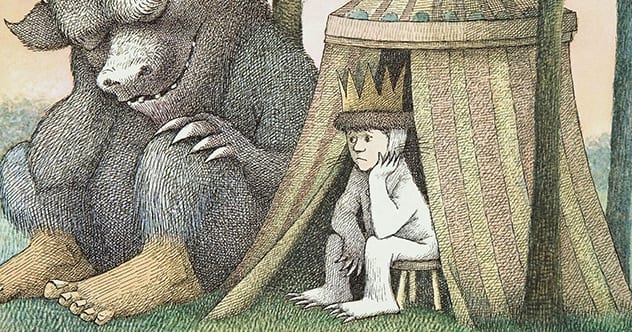
Where the Wild Things Are is one of the most famous children’s books ever written. It’s been subject to several stage and screen adaptations and is a well-known favorite of many, including former US President Barack Obama. The reason for the story’s acclaim is that within Maurice Sendak’s simple words and elegant illustrations, there lies a powerful message that all can relate to.
The plot involves a young, rebellious boy who his mother calls a ‘wild thing.’ Banished to his room without supper for misbehaving, he travels to a fantasy land where he meets fearsome clawed creatures, the real Wild Things. The obvious role reversal, as the boy faces that which he has become, is a fascinating take on growing up and the parent-child dynamic. In the emotional climax of the story, the boy returns home after taming the creatures because he misses his mother’s love, an excellent illustration of how rebellion is part of growing up and how parental love and punishment are two sides of the same coin. The book was initially met with criticism for being too scary for younger readers but, in Sendak’s defense, he initially wanted to write about horses only to discover he didn’t know how to draw them. That twist of fate led him to choose ‘wild things’ for the story that went on to delight millions.
9 The Butter Battle Book – Dr. Seuss
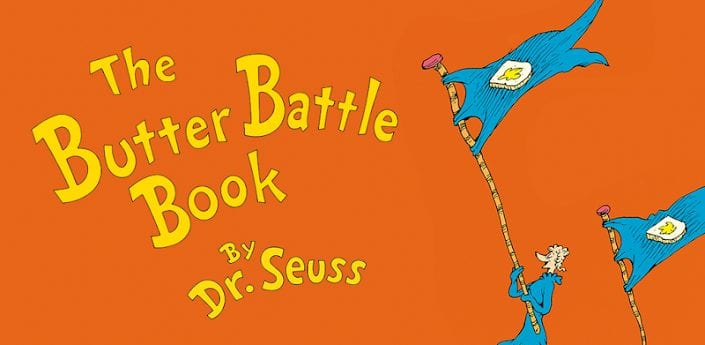
We all know and love Dr. Seuss, the famous pseudonym for American-born author Theodor Griesel. Many of his delightfully rhyming children’s tales are, in fact, powerful allegories for decidedly adult issues. The Butter Battle Book is a prime example. The story involves an old man recollecting the ever-building conflict between the Yooks and the Zooks, two races identical in every way save for which side of their bread they choose to butter, and this trivial difference proves pivotal.
This is, of course, an obvious parallel to the Cold War arms race, as the Yooks and Zooks match each other’s weaponry threats in an increasing escalation that can only have one end. We find here an insightful look at the senseless nature of war and how it often takes on a life of its own beyond the initial cause, something Griesel, who lived through both world wars, knew all too well. The story also serves as an observation on discrimination in general and how we often form value judgments on minor cultural and physical differences. In his usual, effective style, Dr. Seuss brings this all across in what is an amusing children’s book, despite the weight of subtext it contains.
8 Alexander and the Terrible, Horrible, No Good, Very Bad Day – Judith Vorst
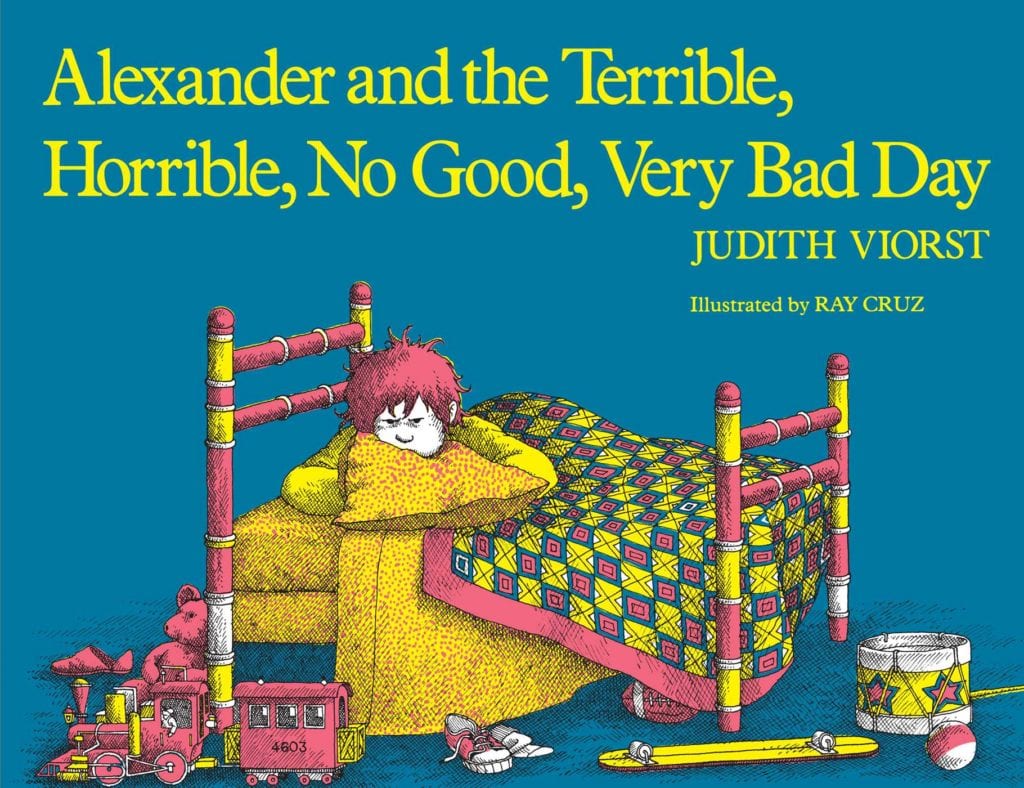
Now there’s a title we can all relate to because everyone has, at some point, had just that kind of day. And what we learn from the experience is that bad days are part of life, but they pass. That is the message in Judith Vorst’s popular children’s story: difficult times are as survivable as they are inevitable. Living life on life’s terms and taking the ups with the downs is difficult for even adults to put into practice and the lesson becomes all the more powerful when put into a children’s context.
Aimed at a younger audience as the book is, Alexander’s challenges are seemingly trivial but, as they cause him considerable distress, can be seen as a metaphor for the daily struggles we all face. And some interesting issues arise when it comes to the boy’s responses, including a clever take on fight or flight, envy, and dealing with the consequences of one’s behavior. The tale concludes with Alexander, having survived his miserable day, realizing that some days are just like that. Grown-ups might choose to examine the underlying psychological aspects here but, at face value, the story is one of hope and perseverance in the face of adversity, and that message is a powerful one indeed.
7 Love You Forever – Robert Munsch
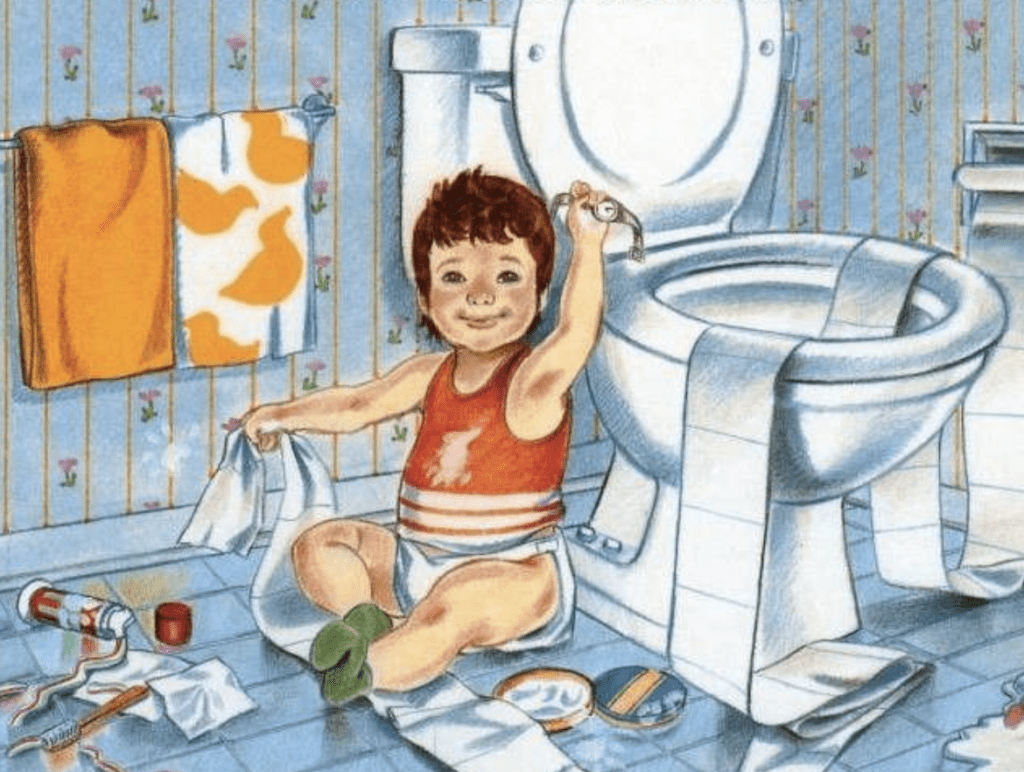
Authors often channel their emotions and experiences through their work and Robert Munsch certainly did that in Love You Forever, his heartbreakingly poignant story about a mother’s timeless love for her child. The tragedy that inspired Munsch’s story would have seemingly been better suited to a long, complex novel, but he chose rather to express his feeling in a children’s tale, and the simplicity and clarity with which the message is conveyed make it extremely powerful.
The story shows a mother who displays her love for her son by comforting and singing to him at various stages in his life as he grows up. In the end, she is old and frail and her son is the one comforting and singing to her. The obvious theme is unconditional parental love, as well as reciprocity, and how as adults we often give back what we received as children. The beautiful tale is made all the more so by the events that inspired it. Munsch’s first two children were stillborn and he and his wife eventually chose to adopt. He wrote Love You Forever while battling his grief and the powerful emotion pours out through every word.
6 The Missing Piece Meets the Big O – Shel Silverstein
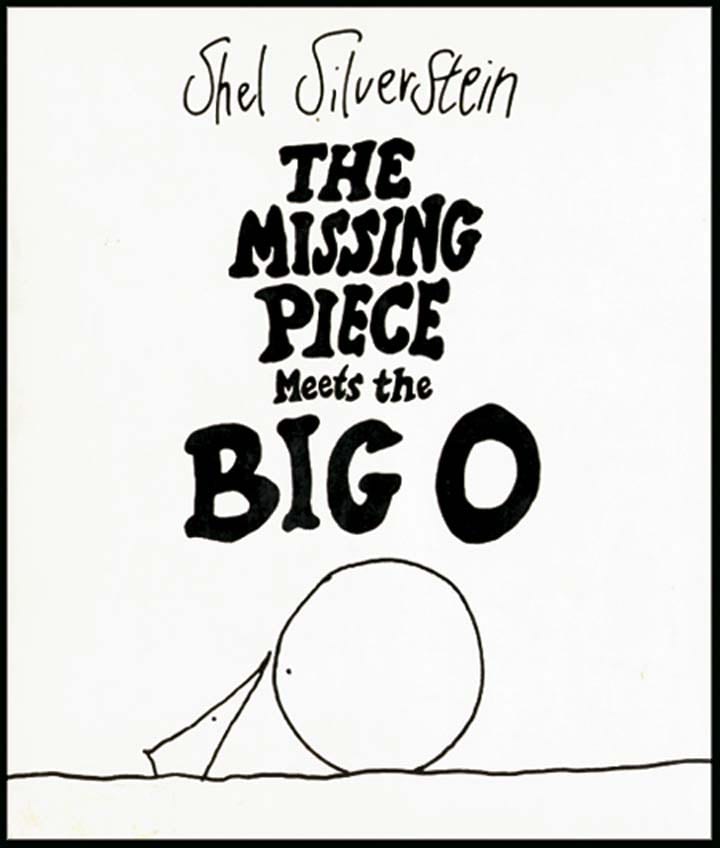
Shel Silverstein, a singularly talented author, had an uncanny way of putting profound, grownup messages in his children’s stories. The Giving Tree is perhaps his most famous work, and its insightful representation of codependence and reciprocity in relationships is astounding. In much the same vein, we have The Missing Piece Meets the Big O, a powerfully simple tale that cuts right to the core of the issue.
In a series of amusing illustrations and plain words intended for children but just as relevant for adults, the story concerns a lonely little wedge looking for a bigger piece he can fit into to become a complete shape. The need to belong, to find the perfect match, is one everyone can relate to, as is the wedge’s lack of success. The tale finishes with the wedge learning that he can wear away his rough edges and become a complete sphere on his own, a strikingly accurate metaphor for reality and one that needs no deep contemplation to grasp and appreciate.
5 The Velveteen Rabbit – Margery Williams

Even in a list full of classic children’s stories, The Velveteen Rabbit stands out as being one of the best-known books ever written for a younger audience. Similar in concept to Pinnochio, the story involves a child’s toy who longs to become real. Margery Williams incorporated this theme in several of her other books, but The Velveteen Rabbit is by far her best, purest representation of longing for recognition and the transformative power of love.
The book raises some interesting issues. As the Velveteen Rabbit longs to become real, something that is only possible for the most loved toys, one can’t help but reflect on the question of what ‘real’ means and how, if you love something, doesn’t that make it ‘real’ even if the object of your affection is inanimate? We also find a fascinating paradox here, as the most loved toys are the ones that are played with most often and, therefore, fall apart soonest, causing one to reflect on the idea of sacrifice and the cost of love. There are also some powerful lines in the story, like when The Skin Horse says, “When you are Real you can’t be ugly, except to those who don’t understand.” This begs the question: does beauty induce love, or is it perhaps the other way around? With so much food for thought, it’s easy to see why The Velveteen Rabbit has become a timeless classic.
4 Zero – Kathryn Otoshi

The moral of Kathryn Otoshi’s unique children’s story is profound in its simplicity and striking in its effective delivery. Self-worth is something everyone struggles with at some point in life, and a crucial lesson for people in general and children in particular to grasp is that every single person matters, that we are all unique but that we each have value, regardless of our differences. Zero conveys this message excellently, while at the same time, asking some interesting questions.
Zero feels empty. She has a hole in her center and is troubled that she doesn’t have counting value like the other numbers. Does she even matter? In the end, she learns that she does have value and the conclusion is a happy one. There are some deeper philosophical considerations in all of this, however, for can nothing have value if it is, by definition, the absence of something? The answer, of course, is yes, for absence has meaning even if it’s only that it gives value to presence by comparison. Zero is meaningless alone, but alongside the other numbers, she gains value because she highlights theirs. We each have merit alone, but fulfillment in life comes from our interactions with others. Otoshi’s story can be viewed on many deeper levels but, no matter how much or how little analysis one applies, the moral here is a uniquely valuable one.
3 Winnie the Pooh – A.A Milne
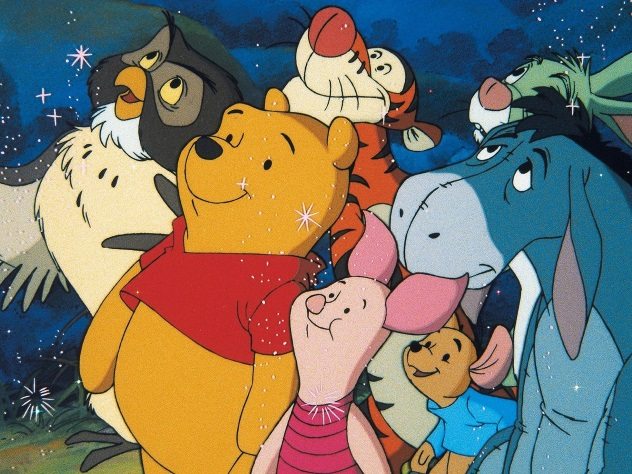
The character of the “Bear of Little Brain” has become so famous that just about everyone has heard of him, his animal friends, and their adventures in the Hundred Acre Wood. The stories have critics, of course, and some regard them as being ‘sickly sweet’ verging on trite, an impression the Disney adaptation did little to correct. But anyone who’s read them since childhood will know that they’re popular for good reason – they’re delightful, deeply insightful, and excellently written in A. A Milne’s uniquely quaint style.
One of the standout features of the stories is how the characters are in a constant battle with their own, individual flaws and traits. In fact, a good point could be made that each animal represents a different mental disorder. Pooh himself is a compulsive overeater, Eyeore is clearly depressed, Piglet suffers from chronic anxiety, and Tigger displays classic symptoms of ADHD. The clear message in A. A Milne’s thoroughly enjoyable tales is not just the enduring bond of friendship and the power of love, but how these things can, and must, exist between flawed individuals. Because, when all is said and done, that is each one of us and a little empathy and understanding can make all the difference.
2 If You Give a Mouse a Cookie – Laura Numeroff
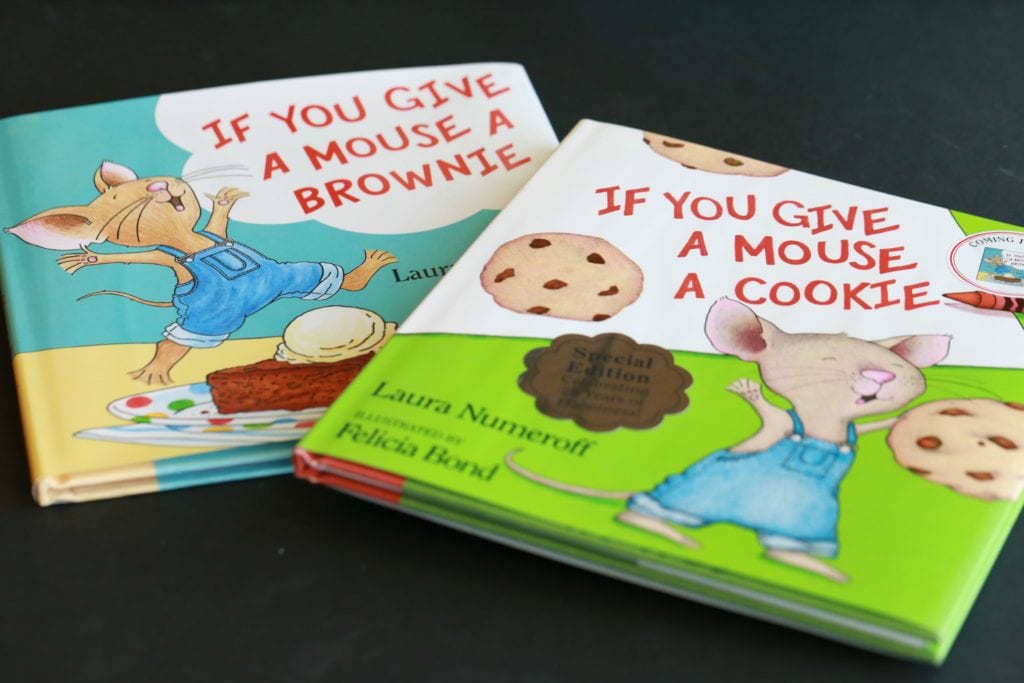
Laura Numeroff’s breakout 1985 children’s book has since seen multiple sequels and has become something of a franchise, but the original stands out as an excellent story because it’s a quick, fun read for kids with charming illustrations by Felicia Bond. Beneath the pleasant exterior, however, the tale teaches the powerful lesson of cause and effect and, by extension, the law of unintended consequences.
The plot, in a nutshell, is this: a boy gives his mouse a cookie which causes it to ask for a glass of milk. After drinking the milk, it needs a napkin. And so on. The simple act of kindness – giving the mouse a cookie – leads the boy on a host of subsequent tasks and while he doesn’t complain, the exasperation on his face is plain to see. Numeroff excellently portrays the basic law of cause and effect – how even our smallest actions have consequences. She also, in turn, shows how we cannot reasonably foresee all the possible outcomes of everything we do but we are nevertheless responsible for our part in setting things in motion. Adult readers are likely to smile knowingly and think of the old saying about no good deed going unpunished, while children will be delighted at the colorful exploits of the cheeky mouse and his hapless human counterpart, making If You Give a Mouse a Cookie a thoroughly enjoyable story for all.
1 The Little Prince – Antoine Saint-Exupery
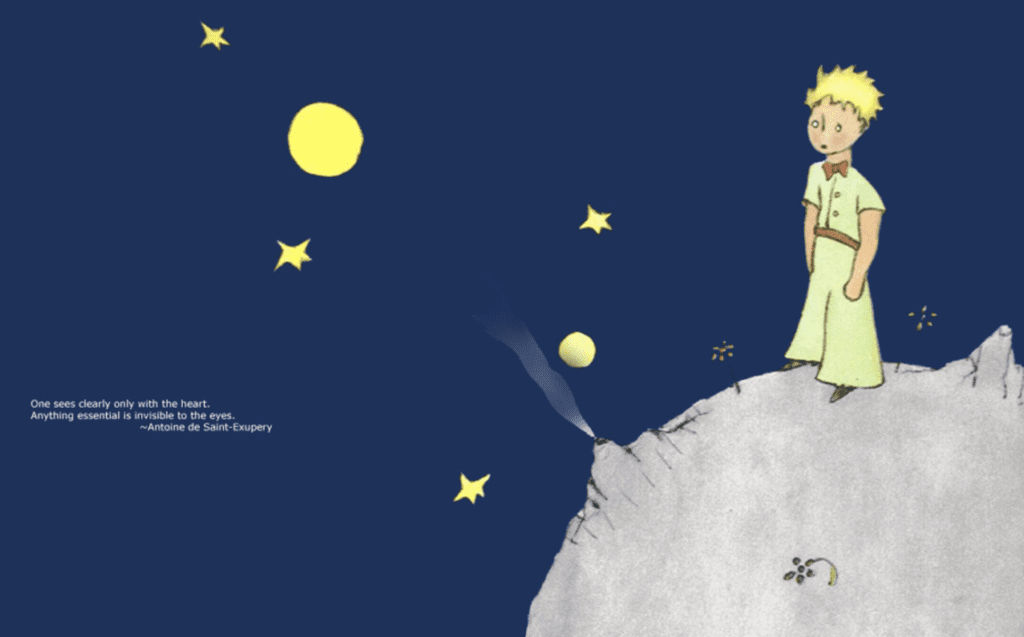
The Little Prince is not just one of the most popular French books of the last century but also quite possibly one of the greatest children’s stories ever written. Antoine Saint-Exupery was an aristocrat and a pilot, and the story was inspired by his airforce exploits during WWII. It’s a magical tale of adventure packed so full of pertinent life lessons that its appeal extends beyond barriers of age and language.
Deep literary and contextual analysis gives the impression that the story, about an aviator who crashes in the desert and encounters a strange being known as The Little Prince, is, at heart, a fable of war and how the turbulent emotions of conflict are countered and eased by the restorative power of love. There are countless other lessons to be found here as well, though, from the importance of caring for the environment as an extension of caring for oneself, the special bond between humans and animals, and making each moment special by appreciating its fleeting nature. All of this combines to make Saint-Exupery’s tale a true classic and undoubtedly one of the most profoundly impactful children’s books in existence.
Top 10 World Famous Books That Got Rejected
About The Author: About the author: I’m 32 years old and I live in South Africa. I work full time in logistics and I’m a freelance writer in my (limited) spare time. I have various projects in the works, including a potential novel, and I regularly participate in the Reedsy Prompts short story contest, where a growing collection of my work is available for reading. I have been a shortlisted finalist there twice so far.








